Lecture 8: Doing Things That Don’t Scale, PR, and How to Get Started
第8课:做一些不符合规模的事情,公关,以及如何开始
第8讲课程视频
![图片[1]_Lecture 8: Doing Things That Don’t Scale, PR, and How to Get Started 第8课:做一些不符合规模的事情,公关,以及如何开始_繁木网](http://fanmu.com/wp-content/uploads/2021/12/Y-Combinator.jpg)
讨论地址:http://www.huomen.com/topic-show-id-103.html
Stanley Tang
唐士丹利
Thanks for having me! I’m Stanley, the founder of DoorDash. It’s really amazing to be here, because it wasn’t actually that long ago when I sat in your seats. I was class of 2014, graduated in CS, as well as my cofounder Andy. For those of you who don’t know what DoorDash is, we’re building an on-demand delivery network for local cities. I want to start off with this photo that I took a few months ago. This was the night when we just raised our series A. I took this photo as I was walking back to where I lived; I actually lived in Roble at the time on campus. I took this photo because I realized just how ridiculous the combination of things I was holding in my hand was at the time. I was holding my CS247 homework, my tax forms (it was April – so I had to fill out my tax forms), that yellow speeding ticket, and right below that was a $15 million piece of paper I had just signed from Sequoia. And that kind of summarizes just how ridiculous our journey has been, doing this while I was at Stanford, and then transitioning this to an actual startup. I want to share with you that story today.
谢谢你邀请我!我是斯坦利,DoorDash的创始人。来到这里真是太棒了,因为我坐在你的座位上的时间不长。我是2014届毕业生,毕业于CS,也是我的共同创始人安迪。对于那些不知道DoorDash是什么的人,我们正在为当地城市建立一个按需交付网络。我想从几个月前拍的这张照片开始。这是我们刚刚举办A辑的那晚,我在走回我住的地方的时候拍了这张照片,当时我住在罗伯。我拍这张照片是因为我意识到当时我手里拿着的东西的组合是多么可笑。我拿着我的CS247作业,我的纳税单(那是四月,所以我必须填写我的纳税单),那张黄色超速罚单,正下方是我刚从红杉签下的1500万美元的一张纸。这就概括了我们的旅程是多么的荒谬,我在斯坦福的时候就这么做了,然后把这个转变成一个真正的创业公司。今天我想和大家分享这个故事。
It all began two years ago in a macaroon store. It was my junior year at Stanford during the fall quarter. At the time, I was really passionate about building technology for small business owners. I sat down with Chloe, the owner of Chantal Guillon, a macaroon store in Palo Alto at the time, just interviewing her, trying to get feedback on this prototype we’d been working on, and also just learning about what her problems were in general. It was during this meeting when Chloe first brought up this problem of delivery. I remember she brought down this really really thick booklet. She showed me pages and pages of delivery orders, and a lot of these orders she had to turn down because there was no way she could have fulfilled them. She had no drivers, and she ended up having to personally deliver all these orders. That was a very interesting moment for us.
这一切都始于两年前的一家杏仁饼店。那是我在斯坦福大学三年级的秋季学期。当时,我非常热衷于为小企业主构建技术。我和Chloe坐了下来,他是当时帕洛阿尔托一家叫Chantal Guillon的杏仁饼店的老板,只是采访了她,试图得到我们一直在研究的这个原型的反馈,同时也了解了她的一般问题。克洛伊是在这次会议上第一次提出分娩问题的。我记得她带来了这本厚厚的小册子。她给我看了一页又一页的送货单,很多订单她都不得不拒绝,因为她不可能完成。她没有司机,最后不得不亲自交付所有这些订单。对我们来说那是一个非常有趣的时刻。
Over the course of the next few weeks, we talked to around 150 to 200 small business owners, and when we brought up this idea of delivery, they kept agreeing with us; they would say, “You know, we don’t have delivery infrastructure. It’s such a huge pain for us. There aren’t any good solutions out there.” This led us to wonder, delivery is such a common thing, such an obvious thing; why hasn’t anyone solved this yet? Like, we must be missing something here right? We thought it was maybe because people had already tried this in the past, but they failed because there wasn’t consumer demand for this. We asked ourselves, “How can we test this hypothesis?” We were just a bunch of college kids at the time. We didn’t own trucks or delivery infrastructure or anything like that; we couldn’t just build a delivery company overnight right? So how could we test this assumption we had?
在接下来的几周里,我们与大约150到200名小企业主进行了交谈,当我们提出送货的想法时,他们一直同意我们的意见;他们会说,“你知道,我们没有送货基础设施。这对我们来说是巨大的痛苦。这让我们不禁要问,送货是如此普遍,如此明显,为什么还没有人解决这个问题?好像,我们肯定错过了什么,对吧?我们认为这可能是因为人们在过去已经尝试过,但他们失败了,因为没有消费者的需求。我们问自己,“我们怎样才能检验这个假设?”那时我们只是一群大学生。我们没有自己的卡车或送货基础设施或诸如此类的东西;我们不能一夜之间建立一个送货公司,对吧?那么我们如何检验我们的假设呢?
欢迎到火门网讨论:huomen.com
We decided to create a simple experiment with restaurant delivery. We spent about an afternoon just putting together a quick landing page. When I went on the Internet, I found some PDF menus of restaurants in Palo Alto. We stuck it up there and added a phone number at the bottom, which was actually our personal cell phone number. And that was it. We put up the landing page and called it PaloAltoDelivery.com. This is actually what it looked liked (PowerPoint slide): It was super simple, ugly, and honestly we weren’t really expecting anything – we just launched it. What we wanted to see was just would we receive phone calls, and if we got enough phone calls, then maybe this delivery idea was worth pursuing.
我们决定做一个餐厅送货的简单实验。我们花了大约一个下午的时间整理了一个快速登录页。当我上网时,我发现了一些帕洛阿尔托餐馆的PDF菜单。我们把它贴在上面,在底部加了一个电话号码,实际上是我们的个人手机号码。就这样。我们把登陆页挂起来,然后叫它PaloAltoDelivery.com网站. 这就是它看起来的样子(PowerPoint幻灯片):它超级简单,丑陋,说实话,我们并没有真的期待什么-我们只是推出了它。我们想看到的只是我们是否会接到电话,如果我们接到足够多的电话,那么这个送货的想法也许值得一试。
So we put it up there; we weren’t really expecting anything, and all of a sudden we got a phone call. Someone called! They wanted to order Thai food. And we’re like, “This is a real order; we’re going to have to do something about it.” So we’re in our cars and we’re like, “We’re not doing anything right now, might as well swing by, pick up some Pad Thai, and let’s try to see how this whole delivery thing works.” And we did. We delivered it to some guy up on Alpine Road I remember. We asked him, “How did you hear about us, what do you do?” He told us he was a scholar, and then he handed me his business card and told me he was the author of a book called Weed the People. That was our first ever delivery. It was like the best delivery/worst delivery you could ever ask for.
所以我们把它放在那里;我们真的没有期待什么,突然我们接到一个电话。有人打电话来了!他们想点泰国菜。我们会说,“这是一个真正的订单,我们要做点什么。”所以我们在车里,我们会说,“我们现在什么都没做,不如顺便去买点泰国菜,让我们看看整个送货过程是如何运作的。”我们做到了。我记得我们在阿尔卑斯山路上把它交给了一个人。我们问他:“你是怎么听说我们的,你是做什么的?”他告诉我们他是一个学者,然后他递给我他的名片,告诉我他是一本书的作者叫杂草的人。那是我们第一次送货。这就像是你所能要求的最好的/最差的交货。
And then yeah, the next day we got two more phone calls. The day after that we got five, then it became seven, and then it became ten. And then soon we began to gain traction on campus through PaloAltoDelivery.com which is pretty crazy, because think about it: This was just a landing page. You had to look up PDF menus to place your orders and then call in. This isn’t exactly the most professional-looking site, yet we kept getting phone calls; we kept getting orders. And that’s kind of when we knew that we were onto something. We knew we found a need people wanted when people were willing to put up with all of this.
第二天我们又接到两个电话。第二天我们得到五个,然后变成七个,然后变成十个。很快我们就开始在校园里通过PaloAltoDelivery.com网站这是相当疯狂的,因为想想看:这只是一个登录页。你必须查看PDF菜单下订单,然后打电话过来。这并不是最专业的网站,但我们不断接到电话,不断接到订单。就在那时,我们知道我们发现了什么。我们知道,当人们愿意忍受这一切时,我们发现了人们想要的需求。
I think another key point to remember is we launched this in about an hour. We didn’t have any drivers; we didn’t have any algorithms; we didn’t have a backend; we didn’t spend six months building a fancy dispatch system – we didn’t have any of that. We just launched because at the beginning it’s all about testing the idea, trying to get this thing off the ground, and figuring out if this was something people even wanted. And it’s okay to hack things together at the beginning.
我想另一个需要记住的关键点是我们在大约一个小时内就启动了。我们没有任何驱动程序;我们没有任何算法;我们没有后端;我们没有花六个月的时间构建一个奇特的调度系统——我们没有这些。我们刚刚启动是因为在开始的时候,我们都是为了测试这个想法,试着让这个东西离地,弄清楚这是否是人们想要的东西。一开始就把事情搞乱是可以的。
At YC there’s a mantra we like to talk about that is doing things that don’t scale. So at the beginning we were the delivery drivers. We would go to class, and then after we would go deliver food. We were the customer support; you know I sometimes had to take phone calls during lectures. We spent afternoons just going down University Avenue just passing out flyers trying to promote DoorDash. We didn’t have any dispatch system so what we had to do was use Square to charge all of our customers. We used a Google Doc to keep track of our orders. We used Apple’s Find My Friends to keep track of where all of our drivers were. You know, just stuff like that, just hacking together solutions to try to get this thing off the ground. In fact at one point we were growing so fast that Square actually shut us down because we were under suspicion for money laundering. I mean think about it, we were getting small chunks of $15-$20 orders coming in at a rapid pace. Luckily, my cofounder Tony worked at Square so he just emailed some buddies there and everything was solved.
在YC有一个我们喜欢谈论的咒语,那就是做不可伸缩的事情。所以一开始我们是送货司机。我们去上课,然后我们去送食物。我们是客户支持;你知道我有时在讲课的时候要接电话。我们花了一下午的时间沿着大学大道走,散发传单,宣传DoorDash。我们没有任何调度系统,所以我们要做的是使用Square向所有客户收费。我们用谷歌文档来跟踪我们的订单。我们用苹果的“找到我的朋友”来追踪我们所有的司机都在哪里。你知道,就是这样,只是拼凑解决方案,试着让这件事开始。事实上,在某一点上,我们增长如此之快,以至于Square实际上关闭了我们,因为我们涉嫌洗钱。我的意思是,想想看,我们收到了一小部分15-20美元的订单,而且速度很快。幸运的是,我的共同创始人托尼在Square工作,所以他给那里的一些朋友发了邮件,一切都解决了。
Another thing about doing things that don’t scale is it also allows you to become an expert in your business, like driving helped us understand how the whole delivery process worked. We used that as an opportunity to talk to our customers, talk to restaurants. We did dispatching which helped us figure out – you know, we manually dispatched our drivers and that helped us figure out what our driver assignment algorithms should look like. We did customer support ourselves, getting real-time feedback from customers. I remember for the first few months when we got started, we would manually email every single new customer at the end of every night asking how their first delivery went, and how they heard about us. We would personalize all these emails: If I saw someone order chicken skewers from Oren’s Hummus, we would say “Oh I love Oren’s Hummus. How are your chicken skewers? How did you hear about us?” Feedback like that was really valuable, and customers really appreciated that.
另一件事是做一些不可扩展的事情,它也可以让你成为你的业务专家,比如开车帮助我们了解整个交付过程是如何运作的。我们利用这个机会与顾客交谈,与餐馆交谈。我们做了调度,这有助于我们弄清楚-你知道,我们手动调度我们的驱动程序,这有助于我们弄清楚我们的驱动程序分配算法应该是什么样的。我们自己做客户支持,从客户那里得到实时反馈。我记得刚开始的几个月里,我们每天晚上都会给每个新客户发邮件,询问他们第一次送货的情况,以及他们是怎么听说我们的。我们会对所有这些邮件进行个性化处理:如果我看到有人从奥伦的鹰嘴豆泥订购鸡肉串,我们会说“哦,我爱奥伦的鹰嘴豆泥。你的鸡串怎么样?你是怎么听说我们的?”这样的反馈真的很有价值,客户也很感激。
I remember this one time – this was during YC – we had just come out of a meeting with one of our restaurant partners, and we heard about this ice cream place that had just opened up on University Avenue called Cream, and we wanted to go try it out. Then all of a sudden, our cofounder back at our office/house texted us saying “Oh we need drivers on the road; we got a huge spike in demand.” So we debated for maybe about 10 seconds if we should go get ice cream or should we go deliver. We obviously went to deliver, but that kind of became our motivation on scaling, like you know, if we would scale, then we could go get ice cream next time.
我记得有一次——这是在YC期间——我们刚和我们的一个餐厅合作伙伴开完会,我们听说一家冰淇淋店刚刚在大学大道开了一家名为cream的店,我们想去试试。突然间,我们办公室/家里的共同创始人发短信给我们说:“哦,我们需要司机上路,我们的需求激增了。”于是我们争论了大约10秒钟,我们该去买冰淇淋还是去送货。很明显,我们是去送货的,但这成为了我们扩大规模的动力,就像你知道的,如果我们扩大规模,那么我们下次就可以去买冰淇淋了。
Now of course we scale across different cities. Now we have to worry about building automated solutions, building dispatch systems, and figuring out how to match demand and supply – all that fancy technology stuff. But none of that mattered at the beginning because at the beginning it’s all about getting the thing off the ground, and trying to find product-market fit.
现在我们当然可以跨越不同的城市。现在,我们不得不担心构建自动化解决方案,构建调度系统,以及如何匹配需求和供应——所有这些花哨的技术东西。但在一开始,这些都无关紧要,因为在一开始,一切都是为了让事情顺利进行,并试图找到适合市场的产品。
Just to summarize, there are three things I would say I learned from doing DoorDash. First, test your hypothesis. You want to treat your startup ideas like experiments. The second thing is, launch fast. We launched in less than an hour with a really simple landing page. And finally, it’s okay to do things that don’t scale. Doing things that don’t scale is one of your biggest competitive advantages when you’re starting out, and you can figure out how to scale once you have your demand. And then maybe once you’ve scaled, then you go get that ice cream. Thank you
总而言之,我想说的是,我从DoorDash中学到了三件事。首先,检验你的假设。你想把你的创业想法当成实验。第二件事是,快速发射。我们在不到一个小时内推出了一个非常简单的登录页。最后,做一些不成比例的事情是可以的。当你刚起步的时候,做一些不可扩展的事情是你最大的竞争优势之一,一旦你有了自己的需求,你就可以知道如何扩展。然后,也许一旦你成功了,你就去拿冰激凌。谢谢你
Q: How did your first customer hear about you?
Q: 你的第一个客户是怎么知道你的?
A: Our very first one, I have no idea. We just launched in Palo Alto; we didn’t do any marketing, so I assume he just must have typed in “Palo Alto delivery” into the web browser. And then after that, we did barely any marketing. I think I sent out one email to my dorm, and that was about it. It was all through word-of-mouth. And that kind of just validates how strong the need we found was when people are just talking about you, and willing to put up with a terrible user experience, terrible design, and stuff like that.
A: 我们的第一个,我不知道。我们刚在帕洛阿尔托上市;我们没有做任何营销,所以我想他一定是在网络浏览器中输入了“帕洛阿尔托送货”。之后,我们几乎没有做任何营销。我想我发了一封邮件到我的宿舍,就这样。都是通过口耳相传。当人们谈论你,愿意忍受糟糕的用户体验,糟糕的设计,诸如此类的事情时,我们发现这种需求是多么强烈。
Q: When you started, it seemed so obvious to you, you were wondering why, what the reason was nobody had done this before. What’s your answer now looking back?
Q: 当你开始的时候,你觉得很明显,你想知道为什么,为什么以前没有人这么做。现在回想起来,你的答案是什么?
A: Looking back I think the biggest thing is mobile. Now everyone has one of those in their pocket, and we saw that trend and thought what if you could design a delivery system that was entirely based off mobile, where you didn’t have to have any infrastructure, or delivery fleets. Instead of hiring drivers full-time or purchasing vehicles, what if you could tap into more of an on-demand pool of independent contractors, and only send orders to them when they have time. So that’s kind of the insight we had; everything was done through mobile.
A: 回顾过去,我认为最大的事情是移动。现在每个人的口袋里都有一个这样的系统,我们看到了这种趋势,并认为如果你能设计一个完全基于移动的交付系统,在那里你不必有任何基础设施或交付车队。与其雇佣全职司机或购买车辆,不如利用更多的按需独立承包商,只在他们有时间时才向他们发送订单。所以这就是我们的见解,一切都是通过手机完成的。
Q: Did you know you were going to be a startup, or were you just making some money at first?
Q: 你知道你将要成为一家初创公司吗,还是你刚开始只是在赚钱?
A: At the time we were all just really passionate about building technology for small business owners, and obviously this delivery thing came out of an experiment with the landing page. It was literally an experiment. We weren’t expecting anything, and it just took off, and we just went with it. And logistics was always something we were really passionate about as well, like logistics of transportation – the perfect fusion of how you can help small business owners through delivery.
A: 当时,我们都非常热衷于为小企业主构建技术,很明显,这种交付方式来自于对登录页的实验。这简直是个实验。我们什么都没想到,它就这么起飞了,我们就跟着它走了。物流也一直是我们非常热衷的事情,比如运输的物流——你如何通过送货帮助小企业主的完美融合。
Q: Did you launch the mobile site first or the website?
Q: 你是先开通手机网站还是先开通网站?
A: We started with this landing page right here which took us about an hour to launch.
A: 我们从这个登陆页开始,花了一个小时才发布。
Q: How does DoorDash stand out amongst a very competitive space?
Q: DoorDash如何在竞争激烈的空间中脱颖而出?
A: At the beginning consumer demand was never a problem, even up until now. So for us it’s just about finding a need and just focusing on serving that demand. At the beginning competition doesn’t really matter.
A: 起初,消费需求从来都不是一个问题,甚至直到现在。所以对我们来说,这只是寻找一种需要,并专注于满足这种需求。一开始竞争并不重要。
Q: How long did it take you to get incorporated into a company?
Q: 你花了多长时间才加入一家公司?
A: We launched in January 2013, and then we did YC that very summer. When we decided to take this idea through YC, we incorporated.
A: 我们在2013年1月推出,然后在那年夏天推出了YC。当我们决定通过YC采纳这个想法时,我们合并了。
Q: Where do you plan to go beyond food delivery?
Q: 除了送菜,你还打算去哪里?
A: For us when we started DoorDash, it was always about helping small business owners and figuring out how you served this for any local merchant whether you were a macaroon store, restaurant, or furniture shop. That’s still our focus; that’s our long-term vision. For now we are just focused on restaurant delivery as a way to scale, but ultimately that’s where we want to end up in.
A: 对我们来说,当我们开始DoorDash的时候,总是要帮助小企业主,弄清楚你是如何为当地的商人服务的,不管你是一家杏仁饼店、餐厅还是家具店。这仍然是我们的重点;这是我们的长期愿景。目前,我们只专注于餐厅送货作为一种扩大规模的方式,但最终这是我们想要结束的地方。
欢迎到火门网讨论:huomen.com
Sam Altman: Next is Walker Williams, founder of Teespring. He’s been working with YC for about a year and a half, something like that. I almost rejected him, which sounds like a dumb idea, but now they’re making hundreds of millions of dollars in revenue, so very luckily I did not. Walker is also going to talk about doing things that don’t scale.
山姆·奥特曼:接下来是沃克·威廉姆斯,Teespring的创始人。他和YC一起工作了一年半,差不多。我几乎拒绝了他,这听起来像是个愚蠢的想法,但现在他们的收入已达数亿美元,所以很幸运我没有。沃克还将讨论做一些不按比例缩放的事情。
Walker: Thank you guys for having me! My name is Walker; I am the CEO/Founder of Teespring. For those of you who don’t know what Teespring is, we are an e-commerce platform that allows entrepreneurs to launch products and apparel brands without risk, cost, or compromise. Today the company is about 180 folks and we ship tens of thousands of products each day. I want to talk to you about one of the most fundamental advantages you have as a start up, and that’s that you are able to do things that don’t scale.
沃克:谢谢你们邀请我!我叫沃克,是Teespring的首席执行官/创始人。对于那些不知道Teespring是什么的人来说,我们是一个电子商务平台,允许创业者在没有风险、成本或妥协的情况下推出产品和服装品牌。今天,公司有大约180人,我们每天运送数以万计的产品。我想和你谈谈你作为一个初创企业最基本的优势之一,那就是你能够做一些无法扩展的事情。
I define things that don’t scale as things that are sort of fundamentally unsustainable; they will not last; they will not bring in the millionth user. Where they break, it’s usually time but it could be a number of other things. But it’s really growth strategies that won’t take you to a million users. There are three places I want to focus on today. First one is finding your first users. The second one is turning those users into champions, and the third one is finding your product/market fit.
我把不可扩展的东西定义为基本上不可持续的东西;它们不会持续;它们不会带来第一百万个用户。在它们断裂的地方,通常是时间,但也可能是其他一些东西。但真正的增长策略不会让你拥有一百万用户。今天有三个地方我想集中讨论。第一个是找到你的第一个用户。第二个是把这些用户变成冠军,第三个是找到适合你的产品/市场。
So finding your first users: The first thing you have to understand is that there’s no silver bullet for user acquisition. You know, everybody, and this includes me when we got started, looks for that dream solution, that paperclip campaign that has tremendous ROI, some accelerating partnership that’s going to springboard you into the stratosphere, and affiliate agreement; something that solves it for you. But the reality is for the vast majority of companies and in fact for every company that I’ve had the chance to speak to the CEO of, that’s just not possible – those are unicorns. And most of the companies that from the outside look like they’ve had this dream growth curve, the reality is that those first users were impossibly hard to get. Let me tell you about the story about this ridiculously unsustainable business.
因此,找到你的第一个用户:你首先要明白的是,没有银弹的用户获得。你知道,每个人,这包括我,当我们开始,寻找梦想的解决方案,回形针运动,有巨大的投资回报率,一些加速合作伙伴关系,将跳板你到平流层,和附属协议;一些东西,解决它为你。但事实上,对于绝大多数公司来说,事实上,对于我有机会与首席执行官交谈的每一家公司来说,这都是不可能的——那些是独角兽。而大多数公司,从外表看,他们似乎有这个梦想的增长曲线,现实是,这些第一批用户是不可能的难以获得。让我来告诉你关于这个荒谬的不可持续的生意的故事。
欢迎到火门网讨论:huomen.com
So this is Teespring in 2012 (PowerPoint). When we first launched, the business couldn’t have looked worse. It took days of meetings; we had to offer free designs, and days of revisions back-and-forth, we’d have to launch the product ourselves, we’d have to do the social media, all to sell about 50 shirts to a local nonprofit and generate about $1000 of revenue. Anybody looking in would’ve said, “You guys have to give up, this is a terrible idea.” But as time went on, those users started to add up, and I think something you have to understand is when you first launch a company, just by virtue of the fact that it’s a new product, you’re going to be bad at selling it right? You’ve got no idea what the pain points of customers really are. You’ve never sold that before. You don’t have any success stories to point to, or testimonials. Those first users are always going to be the hardest.
所以这是2012年的Teespring(PowerPoint)。我们刚开始做生意的时候,生意看起来再糟糕不过了。我们花了好几天的时间开会;我们必须提供免费的设计,来回修改好几天,我们必须自己推出产品,我们必须做社交媒体,所有这些都是为了向一个当地非营利组织出售大约50件衬衫,并产生大约1000美元的收入。任何人都会说,“你们必须放弃,这是个糟糕的主意。”但随着时间的推移,这些用户开始增加,我想你必须明白的是,当你第一次推出一家公司时,仅仅凭借它是一个新产品的事实,你会不善于销售,对吗?你不知道客户真正的痛点是什么。你以前从没卖过。你没有任何成功的故事,或证明。第一批用户总是最难的。
And so it’s your responsibility as a founder to do whatever it takes to bring in your first users. It’s going to be different for every company. The common thread that I hear is, founders need to spend personal time and effort, a lot of their personal time and effort to bring those users in themselves. It could mean a number of things – anything from sending 100 emails a day, getting on the phone and just calling as many people as you can, going through a network like Stanford or Y Combinator. Anything you can do to just get that first user. I really equate it to pushing a boulder uphill. And if you think of a smooth hill when you get started, the incline is the steepest and those first inches are the hardest. But over time as you get farther and farther, the incline steadies out, it gets easier, and eventually you reach a point where you’re at the top of the hill and the boulder starts to roll on its own.
因此,作为一个创始人,你有责任尽一切努力引进你的第一批用户。每个公司的情况都不一样。我听到的共同点是,创始人需要花费个人的时间和精力,大量的个人时间和精力来吸引这些用户。这可能意味着很多事情-从每天发送100封电子邮件,打电话,打电话给尽可能多的人,通过斯坦福大学或Y Combinator这样的网络。你能做的任何事都能得到第一个用户。我真的把它等同于推石头上山。如果你一开始就想到一座平坦的小山,那么斜坡是最陡的,最前面的几英寸是最硬的。但随着时间的推移,你越走越远,斜坡越稳定,就越容易,最终你到达山顶,巨石开始自己滚动。
And so for those first users, you cannot just focus on ROI in the sense of time. Do not expect to spend an hour and return thousands of dollars. Maybe Stanley was one of those unicorns – really incredible story. But for most of us, those first two users are going to take a lot of handholding, a lot of personal love, and that’s okay – that’s essential for building a company. The one caveat of that is, I don’t recommend giving your product for free. And there are plenty of exceptions to this rule, but in general, cutting costs or giving the product away is an unsustainable strategy I wouldn’t recommend. You need to make sure that users value your product. And you know, people treat products that are free in a much different way than a paid product, and often times it can give you a false sense of security like, “Oh we’re getting all these users; surely we can convert them to paid.”
所以对于那些第一批用户来说,你不能只关注时间意义上的投资回报率。别指望花一个小时就能还上千元。也许斯坦利就是其中一只独角兽-真是难以置信的故事。但对我们大多数人来说,前两个用户会有很多牵手,很多个人的爱,这没关系-这是建立一个公司的必要条件。其中一个警告是,我不建议免费提供你的产品。这条规则也有很多例外,但总的来说,削减成本或赠送产品是一种不可持续的策略,我不建议这样做。你需要确保用户重视你的产品。你知道,人们对待免费产品的方式与对待付费产品的方式大不相同,而且往往会给你一种虚假的安全感,比如,“哦,我们得到了所有这些用户;当然我们可以将他们转换为付费产品。”
The second aspect is what happens when you get those users? How do you turn those users into champions? A champion is a user who talks about and advocates for your product. Every company with a great growth strategy has users who are champions. The easiest way to turn a user into a champion is to the delight them with an experience they are going to remember, so something that’s unusual or out of the ordinary – an exceptional experience.
第二个方面是当你得到这些用户时会发生什么?你如何把这些用户变成冠军?拥护者是谈论和拥护你的产品的用户。每一个拥有伟大发展战略的公司都有自己的用户。把用户变成冠军的最简单的方法就是用他们将要记住的体验来取悦他们,因此一些不寻常的或不寻常的东西——一种非凡的体验。
The easiest way to do this early, and again something that is completely unsustainable – it’s not going to scale forever – is to just talk to those users. People will say this all the time, it’s sort of the core tenant of Y Combinator, is talk to users. I cannot stress how important it is that you spend a large chunk of your time talking to users. You should do it constantly, every single day, and as long as possible. Today at Teespring, I’m still the catchall email address, so anytime anybody misspells “support” or writes an email address that doesn’t exist, I get that email. And so I still do about 10 to 20 customer service tickets every single day; I spend hours each night reading every single tweet, probably a little bit OCD, but that’s okay; I read through all the Teespring communities. You’re never going to get a better sense for your products than actually listening to real users. Especially in the early days, the product and the feature set you launch with is almost certainly not going to be the feature set that you scale with. So the quicker you talk to users and learn what they actually need, the faster you can get to that point.
尽早做到这一点最简单的方法,也是完全不可持续的——它不会永远扩展——就是和那些用户交谈。人们会一直这样说,它是Y Combinator的核心租户,是与用户交谈。我不能强调花大量时间与用户交谈是多么重要。你应该经常这样做,每一天,并尽可能长。今天在Teespring,我仍然是最受欢迎的电子邮件地址,所以任何人拼错了“支持”或写了一个不存在的电子邮件地址,我都会收到那封电子邮件。因此,我每天仍然要做10到20张客户服务票;我每晚花几个小时阅读每一条推文,可能有点强迫症,但没关系;我通读所有的Teespring社区。你对产品的感觉永远不会比听真正的用户说话更好。特别是在早期,产品和你发布的特性集几乎肯定不是你扩展的特性集。因此,你越快地与用户交谈,了解他们真正需要的东西,你就越快达到这一点。
There are three ways to talk to your customers. You can run customer service yourself. Up until Teespring was doing about $130-$140,000 a month, my cofounder Evan and I did everything in customer service. This is one where there’s going to be an instinct to quickly pass off, and that’s because it’s painful. Even today when I open our customer service portal, I have an emotional reaction where my stomach sinks because it sucks talking to so many users who have had a terrible experience, and it’s painful that something that you love and put so much effort into, to know you got it wrong or somebody didn’t treat them right. But it’s so important that you go through that and learn what you need to build, and what you need to fix.
与客户交谈有三种方式。你可以自己管理客户服务。直到Teespring的月薪在130-140000美元之间,我和我的共同创始人Evan在客户服务方面做了所有的事情。这是一种本能,很快就会消失,那是因为它很痛苦。即使在今天,当我打开我们的客户服务门户网站时,我也会有一种情绪反应,我的胃会沉下去,因为跟这么多经历过可怕经历的用户聊天太糟糕了,你喜欢的东西,投入了这么多精力,却知道你搞错了,或者有人没有正确对待他们,这让我很痛苦。但重要的是,你要经历这些,学习你需要构建什么,需要修复什么。
The second step is to proactively reach out to current and churn customers. Churn customers are customers who have left. This is one that often falls by the wayside in the pursuit of new customers, but you want to make sure that your customers are having consistent good experiences; you don’t want to take your current users for granted. When a user actually leaves your service, you want to reach out and find out why, both because that personal outreach can make the difference between leaving and staying; sometimes people just need to know that you care and it’s going to get better. And even if you can’t bring them back, there’s a chance that you can learn from the mistakes you made that caused them leave, and fix it so you don’t churn users out in the future in the same way.
第二步是积极主动地接触当前和客户流失的客户。客户流失是指已经离开的客户。在追求新客户的过程中,这是一个经常被忽视的问题,但是你要确保你的客户拥有一致的良好体验;你不想把你当前的用户视为理所当然。当一个用户真的离开你的服务时,你需要联系并找出原因,这两个原因都是因为个人的联系可以决定离开和留下的区别;有时候人们只需要知道你在乎并且会变得更好。即使你不能把他们带回来,你也有机会从导致他们离开的错误中吸取教训,并加以纠正,这样你就不会在未来以同样的方式大量使用用户。
Finally, the one I’m probably most OCD about is social media and communities. You need to know how people are talking about your brand. You need to try to make sure that when somebody does have a bad experience, and they’re talking about it, that you make it right. Problems are inevitable: You’re not going to have the perfect product; things are going to break; things are going to go wrong. That’s not important. What’s important is to always make it right, to always go the extra mile and make that customer happy. One detractor who’s had a terrible experience in your platform is enough to reverse the progress of 10 champions. That’s all it takes, is one to say, “No you shouldn’t use those guys for X reasons,” to ruin a ton of momentum.
最后,我最担心的是社交媒体和社区。你需要知道人们是如何谈论你的品牌的。你需要努力确保当有人确实有过不好的经历,而且他们正在谈论它时,你能把它做好。问题是不可避免的:你不会有完美的产品;事情会破裂;事情会出错。那不重要。重要的是要始终正确,总是多走一步,让客户满意。一个在你的平台上有过可怕经历的诽谤者足以扭转10个冠军的进程。这就是所有需要的,就是说,“不,你不应该因为X的原因使用那些家伙,”来破坏一吨的动力。
There are examples in the early days where we would mess up massive orders. We’d print out colors slightly wrong; it would be the wrong size, and it would be half of our GMV for that month. We would know we got it wrong, and the customer would be unhappy, and the instinct was to say that it was only a little bit off, not completely wrong, or that it would be fine. But the reality is you just have to bite the bullet and make sure it’s right. And the customers who are originally the most frustrated tend to turn into the biggest champions and the longest term users.
早期有一些例子,我们会搞砸大量订单。我们打印出来的颜色有点不对,尺寸不对,而且是那个月GMV的一半。我们会知道我们弄错了,客户会不高兴,本能地说,这只是一点点,不是完全错了,或者会没事。但现实是你必须咬紧牙关,确保它是正确的。而原本最沮丧的客户往往会变成最大的冠军和最长期的用户。
The last one I want to talk about is finding product/market fit. What I mean by that is the product you launch with will almost certainly not be the product that takes you to scale. So your job in those early days of a startup is to progress and iterate as fast as possible to reach that product that does have market fit. And as engineers your instinct is building a platform that’s beautiful, clean-code, and that scales. You don’t want to write a duct tape code that’s going to pile on technical debt. But you need to optimize for speed over scalability and clean code. An example of this is in the early days, we had a couple enterprise customers come in, sort of bigger nonprofits, and say “Hey, we really like your service, but you’re missing these fundamental things, so we’re not going to use it.” And we looked at what it would take to build out those features, and we weren’t sure if they were going to work out long-term, but we wanted to try it.
最后一个我想谈的是找到适合产品/市场的产品。我的意思是说,你推出的产品几乎肯定不会是让你扩大规模的产品。因此,在创业初期,你的工作就是尽可能快地前进和迭代,以获得符合市场需求的产品。作为工程师,你的直觉是构建一个漂亮、干净的代码和可伸缩的平台。你不想写一个管道磁带代码,这将堆积在技术债务。但是您需要优化速度而不是可伸缩性和干净的代码。一个例子是在早期,我们有几个企业客户进来,有点大的非营利组织,说“嘿,我们真的很喜欢你的服务,但你错过了这些基本的东西,所以我们不打算使用它。”我们看了一下需要什么来建立这些功能,我们不确定他们是否能成功长期的,但我们想试试。
My cofounder Evan, who is our CTO and a million times better developer than I am, ran the math and figured out that if we did it the right way, it was going to take about a month to build out these features. A month for a startup – you live in dog years – a month is a year, and that just wasn’t going to do. So he actually went out and duplicated the code-base, duplicated the database, and was able to basically build a completely different product so that he didn’t have to worry about the existing users to serve these enterprise customers. We gave them the tool, they on-boarded, and generated a lot of revenue. Eventually we learned what features were core, and we integrated them into the core product. But what would’ve taken a month, we were able to do in three to four days.
我的共同创始人Evan是我们的首席技术官,是比我优秀上百万倍的开发人员,他计算了一下,发现如果我们用正确的方法来开发这些功能,大约需要一个月的时间。一个月对于一个创业公司来说——你生活在狗年——一个月就是一年,这是不可能的。所以他实际上出去复制了代码库,复制了数据库,基本上可以构建一个完全不同的产品,这样他就不用担心现有的用户来为这些企业客户服务了。我们给了他们工具,他们上了船,创造了很多收入。最终我们了解了哪些功能是核心,并将它们集成到核心产品中。但是我们花了一个月的时间,却能在三到四天内完成。
A great rule of thumb is to only worry about the next order of magnitude, so when you have your tenth user, you shouldn’t be wondering how you are going to serve one million users. You should be worried about how you’re going to get to 100. When you’re at 100, you should think about 1,000. It’s one of those things where necessity is the mother of invention, so when you hit the breaking point (the Twitter Fail Whale is a great example), and in Teespring there were month-stretches where every single night the site would crash – every night. Every single person on the team would go to sleep with their phone on loud, under their pillows, so inevitably when their phones went off, we could quickly restart the server and go back to sleep; this would happen daily. But the reality is that it was worth it, and you’ll end up with these huge pain points and all this technical debt and regret, but it’s worth it just to get to that end goal and that product fit faster. You will make it work; you will survive. Those bumps are just speed-bumps, and speed is so so important early.
一个很好的经验法则是只关心下一个数量级,所以当你有第十个用户时,你不应该想知道你将如何为一百万个用户服务。你应该担心你将如何达到100。当你100岁的时候,你应该考虑1000岁。这是其中一个需要是发明之母的地方,所以当你达到临界点时(Twitter Fail Whale就是一个很好的例子),在Teespring有几个月的时间,网站每一夜都会崩溃——每晚。团队中的每个人睡觉时都会把手机放在枕头下,声音很大,所以不可避免地,当他们的手机关机时,我们可以快速重启服务器,然后再继续睡觉;这种情况每天都会发生。但事实是,这是值得的,你最终会有这些巨大的痛点和所有这些技术债务和遗憾,但这是值得的,只是为了达到最终目标和产品适合更快。你会成功的,你会活下来的。那些颠簸只是减速,而速度在早期是如此重要。
The lesson that I’ve been learning lately is that you want to do things that don’t scale as long as possible. There’s not some magical moment; it’s not Series A, or it’s not when you hit a certain revenue milestone that you stop doing things that don’t scale. This is one of your biggest advantages as a company, and the moment you give it up, you’re giving your competitors that are smaller and can still do these things, that advantage over you. So as long as humanly possible, as long as it is a net positive, you need to spend time talking to your users, you need to move as fast as possible in development, but don’t give it up willingly; it should be ripped from you.
我最近学到的教训是,你要做的事情不能尽可能长。没有什么神奇的时刻;也不是A系列,也不是当你达到某个收入里程碑时,你就停止做那些无法扩展的事情。这是你作为一家公司最大的优势之一,当你放弃的时候,你就给了你的竞争对手一个比你小的优势,他们仍然可以做这些事情。所以,只要是人之常情,只要是网络利好,你就需要花时间和你的用户交谈,你需要在开发中尽可能快地前进,但不要心甘情愿地放弃;它应该从你身上扯下来。
The last thing is, we’ve created an official “How to Start a Startup” T-shirt with Sam. All proceeds are going to Watsi.org. I couldn’t miss this opportunity to sell, so if you guys want to grab one of the official tees, just go to teespring.com/startup; it’s supporting a great cause.
最后一件事是,我们已经和山姆一起制作了一件官方的“如何创业”T恤。所有收益都将用于Watsi.org网站. 我不能错过这个销售的机会,所以如果你们想买一个正式的球座,就去teespring.com/启动它支持一项伟大的事业。
Thank you.
非常感谢。
Q: What convinced you to get into the market of T-shirt printing when there is so much competition in this business?
Q: 在这个行业竞争如此激烈的情况下,是什么说服你进入T恤印刷市场的?
A: I think there are two factors to it. First, I completely agree. From the outside, people have been telling us that this is a silly idea since day one in every order magnitude we reach. People will come and say, “This is a terrible idea. Why are you doing that?” But the reason why we launched Teespring is because we ran into a personal pain point. We identified a need and found that there were no great current solutions. I was a student at Brown trying to create a “Remember the Bar” shirt for a dive bar that got shutdown, and I realized that nothing matched my needs. And so because I knew that I had that pain point, and I knew there was market fit, and I had seen people adopt the product, I knew there was something there. And it was also one of those things where you could sort of feel the wind on your back where people were adopting the product quickly. The pain point was clearly there; it’s not a met need. So I would say that most times, great ideas start out by looking like the silly ideas, and then you can feel out whether or not there is a scalable business by how people are adopting it and whether it is possible to bring customers onboard.
A: 我认为有两个因素。首先,我完全同意。从外面看,人们一直告诉我们,从第一天起,这是一个愚蠢的想法,在我们达到的每一个数量级。人们会说,“这是个可怕的主意。你为什么这么做?”但我们推出Teespring的原因是因为我们遇到了个人的痛点。我们确定了一个需求,发现目前没有什么好的解决方案。我是布朗大学的一名学生,当时我正试图为一家被关闭的潜水酒吧设计一件“记住酒吧”的衬衫,但我意识到没有什么能满足我的需要。所以,因为我知道我有那个痛点,我知道有市场适合,我看到人们采用这个产品,我知道那里有一些东西。这也是其中一个你可以感觉到风在你的背上,那里的人们正在迅速采用产品。痛点显然就在那里;这不是一个满足的需要。所以我想说,大多数时候,伟大的想法都是从看起来像愚蠢的想法开始的,然后你可以通过人们如何采用它,以及是否有可能将客户带到公司,来判断是否有一个可扩展的业务。
Q: Are nonprofits your biggest customer base?
Q: 非营利组织是你最大的客户群吗?
A: No, today our biggest customer base is entrepreneurs who are trying to build brands and businesses. We have a little over 1000 people who make their full-time living on Teespring today via brands they’ve launched. And the other side is influencers, so YouTube stars, Reddit communities, bloggers who want to add product merchandise as a way to create a brand and monetize that affinity. Those are our two biggest markets. We still work with a lot of nonprofits, and love working with them. They are still part of our business, but just not the majority.
A: 不,今天我们最大的客户群是那些试图建立品牌和业务的企业家。我们现在有1000多人通过他们推出的品牌在Teespring上全职生活。另一方面是有影响力的人,比如YouTube明星、Reddit社区、博客作者,他们希望通过添加产品商品来创建品牌并将这种亲和力货币化。这是我们最大的两个市场。我们仍然与许多非营利组织合作,并且喜欢与他们合作。他们仍然是我们业务的一部分,但不是大多数。
Thank you.
非常感谢。
Sam Altman: Now we have Justin Kan. Justin was the founder of Kiko, and the Justin.tv which became Twitch. He is going to talk about Public Relations.
山姆·奥特曼:现在我们有了贾斯汀·坎。贾斯汀是Kiko的创始人贾斯汀电视台变成了抽搐。他要谈公共关系。
Justin: I’ve started a lot of start-ups, but I think you’ve heard a lot of awesome “how I got started” stories, so I’m going to talk about something very specific that people always have questions about, which is press: how do you get it and how does it work? This is kind of like an abridged version of what we talk about at Y Combinator. Hopefully you guys will find it helpful.
贾斯汀:我开过很多初创公司,但我想你听过很多很棒的“我是怎么开始的”故事,所以我要谈一些人们总是有疑问的非常具体的事情,那就是媒体:你是如何得到它的,它是如何工作的?这有点像是我们在Y Combinator讨论的一个简化版本。希望你们会发现这很有帮助。
When most people get started with entrepreneurship, they think about press and being in the press as something that happens magically. They think about journalists out there, trying to get the best stories – it’s like a meritocracy – which is absolutely not the case.
当大多数人开始创业时,他们会把媒体和在媒体中的存在看作是神奇的事情。他们想到的是记者,试图得到最好的报道——这就像一个精英统治——这绝对不是事实。
Before you think about press, one of the things you really want to consider is who you want to reach, as well as your actual goal. I know when I got started I wanted to be in the news because I thought that’s what you did as an important company. It turns out that if you don’t have any goals, you’re not going to achieve them – that’s true of pretty much everything. And with press, if you aimlessly just want to be covered, it’s not going to do anything for your startup. If you don’t have an actual business goal, then it’s not a good use of time.
在你考虑媒体之前,你真正想考虑的一件事就是你想要达到谁,以及你的实际目标。我知道刚开始的时候我想上新闻,因为我觉得这是你作为一家重要公司所做的。事实证明,如果你没有任何目标,你就无法实现——几乎所有事情都是这样。有了媒体,如果你漫无目的地只想被报道,那对你的创业公司也没什么用。如果你没有一个实际的商业目标,那就不能很好地利用时间。
So there are many different goals. With Socialcam, which is a spinoff of Justin.tv, our goal was to be known as like video Instagram and be thought of in that context. When it was time to pitch to our Silicon Valley investors and influencers, we really wanted to get covered in tech press and be positioned as this new, hot social app.
所以有很多不同的目标。与Socialcam合作,后者是贾斯汀电视台,我们的目标是被称为像视频Instagram和被认为是在这种情况下。当我们要向硅谷的投资者和有影响力的人推销时,我们真的很想被科技媒体报道,并被定位为这个新的、热门的社交应用程序。
With Exec one of my goals was to get customers. Exec was like a local cleaning service, and our goal was to get people in San Francisco to use it. It wasn’t useful to get national press because 99% of those people couldn’t use it. So we targeted initially local press like SF Chronicle, who would directly talk to people who could potentially use our app. TwitchTV, which is probably what you guys mostly know, is like ESPN for gamers, kind of like a live stream community for gamers. Our goal was to reach the gaming industry. Now it’s like 55 million uniques and people in the gaming industry know about it, but when we started nobody really knew that; it wasn’t a place to advertise, we were a very small gaming community. Our goal was to get people in the gaming industry, whether they were developers or advertisers, to think about us as an important place where influencers were. So we really targeted industry trades and game dev blogs. Stuff that the industry was reading.
对于Exec,我的目标之一就是吸引客户。Exec就像一个当地的清洁服务,我们的目标是让旧金山的人们使用它。得到全国性的媒体是没有用的,因为99%的人不能使用它。因此,我们最初的目标是当地媒体,如旧金山纪事报,他们会直接与可能使用我们的应用程序的人交谈。TwitchTV,这可能是你们大多数人都知道的,就像游戏玩家的ESPN,有点像游戏玩家的直播社区。我们的目标是进入游戏行业。现在它就像5500万个unique,游戏行业的人都知道它,但是当我们开始的时候,没有人真正知道这一点;它不是一个做广告的地方,我们是一个非常小的游戏社区。我们的目标是让游戏行业的人们,不管他们是开发者还是广告商,把我们看作是一个重要的地方,那里有影响力。所以我们真正的目标是行业交易和游戏开发博客。业界正在阅读的东西。
So what’s an actual story? I think there’s a bunch of different types of stories, but these are the ones you usually see in startups. Product launches are when you launch a different version of your app.
那么真实的故事是什么呢?我认为有很多不同类型的故事,但这些都是你通常在初创公司看到的。产品发布是指你发布不同版本的应用程序。
There’s fundraising; for whatever reason, the press loves to write about fundraising even though it’s not very interesting. So like if you raise a million dollar seed round you can pretty much get that covered.
有募捐;不管出于什么原因,媒体都喜欢写募捐的文章,尽管它不是很有趣。所以,如果你筹到一个百万美元的种子轮,你几乎可以得到覆盖。
Milestones are metrics, like if you’ve achieved one million dollars a week in revenue. The company that bought Exec just announced that they achieved one million dollars a week in revenue, and it was covered pretty widely. Business stories, which happen when you’re already a successful company, The New York Times, The New Yorker, or Business Magazine, will want to cover your startup story. You don’t have to worry about that in the beginning.
里程碑是一种衡量标准,比如你每周的收入达到了一百万美元。收购Exec的公司刚刚宣布,他们每周的收入达到100万美元,而且涉及面相当广。当你已经是一家成功的公司时,商业故事就会发生,《纽约时报》、《纽约客》或《商业杂志》会想报道你的创业故事。一开始你不用担心。
What I like to call stunts – I don’t know if you guys remember, but a couples years ago, this YC company called WePay dropped a block of ice with money frozen in it outside of a PayPal developer’s conference because PayPal was in the news for freezing various developers’ account. It was widely covered because it was such an interesting thing, you know, it got them in the story, they wouldn’t have been talked about in the context of PayPal at all.
我喜欢称之为特技-我不知道你们是否还记得,但几年前,这家名为WePay的YC公司在一个PayPal开发者大会外扔了一块冰,里面的钱被冻结了,因为PayPal因为冻结了各个开发者的账户而上了新闻。它被广泛报道是因为这是一件非常有趣的事情,你知道,它把他们带到了故事中,他们根本不会在贝宝的背景下被谈论。
Hiring announcements: If you’re a big enough company and you hire someone really important, people will want to cover that.
招聘启事:如果你是一家足够大的公司,而且你雇佣了一个非常重要的人,人们会想报道这个。
And finally contributor articles which would be you writing some sort of industry overview or some opinion piece, maybe a tech blog, stuff like that.
最后是投稿人的文章,你可以写一些行业概况或观点文章,也许是一个科技博客,诸如此类的东西。
Basically any of those things can be a story. Something that people usually don’t think about when you’re trying to start a startup is, when you start a startup, you think that everything you’re doing is interesting, but that may not be true for other people. What you really need to think about objectively is, if I wasn’t the founder of this company, would I want to read a story about what I’m pitching? So your incremental feature release or your 2.01 feature release might not be interesting just because you added “Find Your Contacts” on Facebook. You really want to take a step back before you invest the time in actually trying to pitch a story, and think, “Will anyone actually really want to read this?” What journalists and bloggers are really looking for are things that people actually want to read.
基本上所有这些都可以成为一个故事。当你开始创业时,人们通常不会想到的是,当你开始创业时,你认为你所做的每件事都很有趣,但对其他人来说可能不是这样。你真正需要客观地思考的是,如果我不是这家公司的创始人,我会想读一个关于我正在推销的东西的故事吗?因此,你的增量功能版本或2.01功能版本可能并不有趣,仅仅因为你在Facebook上添加了“查找联系人”。你真的想退后一步,在你投入时间去推销一个故事之前,想想,“有人真的想读这个吗?”记者和博客作者真正想要的是人们真正想读的东西。
The other thing is you don’t actually have to be very original – your press doesn’t have to be original. It just has to be what I like to call “original enough.” You don’t want to be the second-coolest company to raise $5 million on Kickstarter – the first guy gets all the news. The first video game console to raise $10 million on Kickstarter was huge news because they were the first in that category, even though a lot of people had raised a lot of money for Kickstarter before. Think about your stories in the context of other things that have been written and if they’re like novel enough or aren’t something that was just written about in the news.
另一件事是你实际上不必很有创意-你的媒体不必很有创意。它必须是我喜欢称之为“足够原创”的东西。你不想成为第二个在Kickstarter上融资500万美元的最酷的公司——第一个家伙得到了所有的消息。第一款在Kickstarter上融资1000万美元的电子游戏机是一个巨大的新闻,因为它们是这类游戏中的第一款,尽管之前很多人都为Kickstarter筹集了大量资金。把你的故事放在已经写过的其他东西的背景下想想,如果它们足够新颖或者不是刚刚在新闻里写的东西。
So one of the actual mechanics of getting the story (this is pretty tactical), if you want to get your news in the press, basically there are some really easy steps to follow: Think of getting press like a sales funnel. You’re going to talk to a lot of people but not all of them are going to convert – so you shouldn’t be upset when one individual person or reporter doesn’t write your story. The first thing is you have to think of it like a story. The second thing is you want to get introduced to any reporter or multiple reporters who are going to write about your thing. It’s much much easier, just like any business development, to get in touch with them through someone, rather than cold emailing them.
因此,获得新闻的实际机制之一(这是相当战术性的),如果你想在媒体上获得新闻,基本上有一些非常简单的步骤可以遵循:把媒体想象成一个销售漏斗。你会和很多人交谈,但不是所有人都会改变主意——所以当一个人或记者不写你的故事时,你不应该感到不安。首先你要把它当作一个故事。第二件事是你想被介绍给任何一个或多个记者谁将要写你的东西。和任何业务开发一样,通过某人与他们联系要容易得多,而不是冷冰冰地给他们发电子邮件。
The best thing to do is go to entrepreneurs who were just written about or friends who were just covered on TechCrunch, get them to introduce you to that reporter who wrote about them. The reason that’s good is because from the entrepreneur’s perspective, the easiest thing in the world to do is to introduce you to the reporter who already wrote about them. They don’t need anything else from the reporter, and they’re actually doing that person a favor if the story is interesting; it’s not like you’re asking for intros to investors or people they would want to hire as employees. And then from the reporter’s perspective, they’re getting introduced to someone who they already vetted as interesting; they’re getting an intro from someone who they believed was interesting enough to write about, so by the transitive property, they’re going to think you’re probably interesting.
最好的办法是去找那些刚刚被写过的企业家或者TechCrunch报道过的朋友,让他们把你介绍给那些写过他们的记者。之所以这样做很好,是因为从企业家的角度来看,世界上最简单的事情就是把你介绍给已经写过他们文章的记者。他们不需要从记者那里得到任何其他东西,如果故事有趣的话,他们实际上是在帮那个人一个忙;这不像你是在向投资者或他们想雇佣的员工做介绍。然后从记者的角度来看,他们会被介绍给一个他们已经审查过的有趣的人;他们会从一个他们认为有趣到可以写的人那里得到一个介绍,所以根据传递属性,他们会认为你可能很有趣。
So you get an email from this guy who introduces you to the reporter, and you want to get in contact with them with enough time to get them to write a story – let them know probably a week in advance or more, because they’re not going to drop everything they’re doing to just write about your news. A lot of people, especially first time entrepreneurs, will come and say “Justin I’m launching this product tomorrow. Can you get me in TechCrunch?” That’s probably not going to happen unless you already have a relationship. The best thing to do is give yourself some lead time; get that intro in advance.
所以你收到一封介绍你给记者的邮件,你想和他们联系,给他们足够的时间让他们写一篇报道——提前一周或更长时间让他们知道,因为他们不会为了写你的新闻而放弃他们正在做的一切。很多人,特别是第一次创业的人,会来说“贾斯汀,我明天就要推出这个产品了。你能帮我弄到TechCrunch吗?”除非你已经有了一段感情,否则这可能不会发生。最好的办法是给自己一些准备时间,提前做介绍。
So once you’ve set a date for your news to go out – you’re going to launch a product in two weeks – you have this intro, you’ve set up some sort of meeting, and you really want to get the reporter to invest time and effort into you because there’s a sunk cost fallacy at play. Basically, the more time they spend with you, the more likely they are to write about you. The best thing to do is get a face-to-face meeting. Some bloggers don’t actually want to meet face-to-face, but like if not that, then get a phone call. The worst thing to do is just have an email exchange because it’s very easy for them to forget about it or ignore it.
所以,一旦你确定了新闻发布的日期——你将在两周内推出一款产品——你就有了这个介绍,你已经安排了一些会议,你真的想让记者为你投入时间和精力,因为存在沉没成本谬论。基本上,他们和你在一起的时间越多,他们就越有可能写关于你的文章。最好的办法是开个面对面的会议。有些博主其实并不想面对面,但如果不是这样,那就接到一个电话。最糟糕的事情是只需要一封电子邮件,因为他们很容易忘记或忽略它。
The next step is actually pitch them. What I do is actually write out the ideal story that I want to see published in bullet points, and memorize it. And when I have a conversation with them if it’s in person, the conversation is structured like my outline, and they’ll be taking notes. Then they’ll go transcribe those notes into a story. So basically what I wrote will be translated into an actual story. By preparing, you can actually control more of the conversation and not forget critical things like mentioning your cofounder’s name or the awesome features in your app are.
下一步实际上是推销他们。我要做的是写出我想看到的理想故事,以要点的形式发表,并记住它。当我当面和他们谈话时,谈话的结构就像我的提纲,他们会做笔记。然后他们会把笔记转录成故事。所以基本上我写的会被翻译成一个真实的故事。通过准备,你实际上可以控制更多的对话,并且不会忘记重要的事情,比如提到你的共同创始人的名字或者你的应用程序中令人敬畏的功能。
If I’m doing this over the phone, I’ll make sure to have the bullet point list in front of me and I will make sure to walk through a conversation that includes all those things. So you have a pitch, they take notes, and they’re going to write the story at this time. The next thing to do is follow-up like a couple days or day before your actual news goes out. You want to send them an email that says “This is the time we’re launching the app; thanks for meeting; here’s collateral if there are any videos, photos, or screenshot you want to include; how to spell your cofounder’s name or your name. I just include all the information that I really care about and bold it. And then that’s it. Hopefully the day comes when you press submit on the release to the App Store and at the same time, they released their article on TechCrunch and you are famous.
如果我在电话里这样做,我会确保把要点清单放在我面前,并且我会确保完成一个包含所有这些内容的对话。所以你有一个演讲,他们做笔记,他们会在这个时候写故事。下一步要做的就是在你真正的新闻发布前的几天或几天跟进。你想给他们发送一封邮件,上面写着“这是我们推出应用程序的时候了;感谢您的会面;如果有任何视频、照片或屏幕截图,请提供辅助资料;如何拼写你的共同创始人的名字或你的名字。我只是把所有我真正关心的信息都写进去,然后加上粗体字。就这样。希望有一天,当你在appstore发布的时候按下submit,同时,他们在TechCrunch上发布了他们的文章,你就出名了。
So a lot of people ask us about PR firms. So I think in the beginning it’s kind of like, everything you do in a startup, you want to do yourself. And it’s actually pretty easy especially with tech press and bloggers who constantly need new things to write about. I strongly encourage people to try it themselves, and kind of get started by learning the process themselves before they hire anyone. One thing I’ll say is that firms can only help you with the contacts and the logistics, but they can’t help you know what’s interesting about your company, or – I’m never been able to have any one that’s told me what the stories that I’m producing on; they’ve only been able to give me a list of reporters I might want to contact. So you really have to be responsible about thinking about what’s interesting about your company and what you’re doing, you know, the roadmap of interesting things that you’re working on.
所以很多人问我们公关公司的事。所以我觉得一开始,你在创业公司做的每件事,你都想自己做。这其实很容易,尤其是科技媒体和博客作者,他们总是需要新的东西来写。我强烈鼓励人们自己去尝试,在他们雇佣任何人之前,先自己学习这个过程。我要说的一件事是,公司只能在联系人和物流方面帮助你,但他们不能帮助你了解贵公司有什么有趣的地方,或者——我从来没有人告诉过我正在制作什么故事;他们只能给我一份我可能想联系的记者名单。所以你真的要负起责任去思考你的公司有什么有趣的地方,你在做什么,你知道,你正在做的有趣事情的路线图。
They’re also really expensive. I think we were spending about $5,000 and $20,000 a month, and for various firms, it’s a lot – for a startup right? It’s generally not a good use of money especially in the early days. Getting press is a lot of work, so you should really make sure it’s worth it. Getting press is like a vanity metric: It feels like you’re being successful because many successful companies like Facebook are covered in the press all the time, but it doesn’t actually mean you’re successful; it doesn’t actually mean you’re making money, getting users, or making those users happy.
它们也很贵。我想我们每个月大概要花5000美元和20000美元,对于不同的公司来说,这是一大笔钱——对于一家初创公司来说,对吧?一般来说,这不是一个好的用钱方式,尤其是在早期。得到媒体是一个很大的工作,所以你应该真正确保它是值得的。获得新闻媒体就像一个虚荣的衡量标准:感觉你成功了,因为很多像Facebook这样的成功公司一直被媒体报道,但这实际上并不意味着你成功了;它实际上并不意味着你在赚钱,获得用户,或者让那些用户开心。
Sometimes it’s a really good strategy for getting your first hundred or two hundred or a thousand customers, but it’s really not a user-scalable acquisition strategy, so it’s really something that’s just a bootstrap; you can’t just get like infinity articles written about you. Eventually people are going to get tired of hearing about your company, and usually that happens really quickly right? The pull point about news is that it’s new, so it’s pretty hard, unless you’re like Google, to get covered in the press every week. If you decide it’s worth it though, that you do want to have a regular heartbeat of news, you’re thinking about what you’re doing that matches those seven story types in the future. When I was working primarily on marketing and PR, I would make a schedule on the calendar of when we’re going to launch things and make sure to space them out, but have them appear at regular intervals so people didn’t want to forget about us and we could maximize our coverage.
有时候,这是一个非常好的策略来获得你的第一个一百,两百或一千个客户,但它真的不是一个用户可伸缩的收购策略,所以它真的只是一个引导;你不能像无限的文章写你。最终人们会厌倦听到你公司的消息,而且通常这种情况很快就会发生,对吧?新闻的吸引力在于它是新的,所以除非你像谷歌一样,否则每周都很难被媒体报道。如果你觉得值得,你确实想有一个固定的心跳的新闻,你在想你在做什么,以符合这七个故事类型的未来。当我主要从事市场营销和公关工作时,我会在日程表上安排我们什么时候推出产品,并确保将它们隔开,但要让它们定期出现,这样人们就不会忘记我们,我们可以最大限度地扩大覆盖面。
You also want to keep your contacts fresh; it’s really a relationship business. Once someone writes about you, you should keep up with them because they could potentially write about you in the future. You’re more likely to do something for someone that you’ve already done something for in the past. I would try to establish good relationships with a couple reporters that you could go to for breaking news; it could come in handy later if you’re fortunate enough to have people writing negative things about you; your relationships will help you get out your side of the story.
你还想保持你的联系方式新鲜;这其实是一个关系生意。一旦有人写你,你应该跟上他们,因为他们可能会写你的未来。你更有可能为你过去已经为之做过的人做一些事情。我会试着和几个记者建立良好的关系,你可以去那里看突发新闻;如果你足够幸运,有人写你的负面消息,这可能会在以后派上用场;你的关系会帮助你走出自己的一方。
The last thing is kind of like a golden rule or more of like a “pay it forward:” You should help your fellow entrepreneurs get coverage because they’ll help you get coverage. The best way to get coverage is really through these introductions. Whenever I’m meeting with reporters, I throw out names of other things I think would be interesting stories for them, and usually that comes back. The reporters like it because you’re helping them find interesting stories, and you’re more likely to get leads back from those entrepreneurs that you helped out.
最后一件事有点像一条黄金法则,或者更像一条“向前支付”的法则:你应该帮助你的创业伙伴获得保险,因为他们会帮助你获得保险。获得报道的最好方法就是通过这些介绍。每当我与记者见面时,我都会抛出一些我认为对他们来说很有趣的故事的名字,而这些故事通常又会回来。记者们喜欢这样,因为你在帮助他们寻找有趣的故事,而且你更有可能从那些你帮助过的企业家那里得到线索。
If you’re interested in learning more about press, here are two resources that I really like: Jason Kincaid, who is a former TechCrunch reporter, goes through a great overview that covers a lot of things I talked about in more depth. And then kind of an evil resource is this book called Trust Me, I’m Lying which was written by a former marketer at American Apparel. He talked about ways that he evilly manipulated the press, but I think it’s a pretty good look into the psychology of how stories spread on the Internet; it’s valuable to take a look at. Cool, that’s basically it.
如果你有兴趣了解更多关于新闻界的知识,这里有两个我非常喜欢的资源:前TechCrunch记者杰森·金凯(Jason Kincaid),他对我所谈论的很多事情进行了深入的概述。还有一种邪恶的资源是这本书叫《相信我,我在撒谎》,是由美国服装公司的前营销人员写的。他谈到了他邪恶地操纵新闻界的方式,但我认为这是一个很好的观察新闻如何在互联网上传播的心理,值得一看。酷,基本上就是这样。
Q: When is the right time to start worrying about press altogether?
Q: 什么时候才是开始担心媒体的时候?
A: The first time I launched my first startup, you know my first products, for a lot of them we got zero attention and we didn’t really know how we could get 100 users. I think it’s a really fine way to get 100 users, and a lot of companies at YC when they first launch their product, we’ll encourage them to get out and do one TechCrunch story to get a few people to see it. It’s good to get in the practice. I wouldn’t obsess getting coverage in multiple outlets or anything like that in the very beginning.
A: 我第一次创业的时候,你知道我的第一个产品,很多产品我们都没有关注,我们真的不知道怎么才能获得100个用户。我认为这是获得100个用户的一个非常好的方法,YC的很多公司在第一次推出产品时,我们会鼓励他们走出去,做一个TechCrunch故事,让几个人看到它。参加练习很好。一开始我不会沉迷于在多个渠道或类似的地方获得报道。
Q: How much of a role did you guys play in getting the Pokemon thing out?
Q: 你们在把口袋妖怪弄出来的过程中扮演了多大的角色?
A: Twitch had this thing called “Twitch Plays Pokemon” where developers set up a Pokémon Gameboy game that was controlled by chat, so millions of people would be typing in A or B, and the character would wander around aimlessly. That was a huge news story. I think what we did was set the stage by having other news stories that someone from the BBC would Google “Twitch” and be like, “What is this crazy thing that everyone on Reddit is talking about?” They would have some context. The other thing is we didn’t come up with the idea for Twitch. That was like fortuitous, but we helped give it legs by making the company available to talk to reporters and suggesting follow-up stories, not only about “Twitch Plays Pokémon” with 100,000 people watching, but also stories about when they beat the game or when Twitch played Crystal, the new Pokémon version. We didn’t originate the story; it was the community who I think really originated it.
A: Twitch有一个叫做“Twitch Plays Pokemon”的东西,开发者在里面建立了一个由聊天控制的Pokémon Gameboy游戏,所以数以百万计的人会输入A或B,角色会漫无目的地四处游荡。那是个大新闻。我认为我们所做的是通过其他的新闻故事来做铺垫,BBC的人会在谷歌上“抽搐”,然后说,“Reddit上的每个人都在谈论什么疯狂的事情?”他们会有一些背景。另一件事是我们没有想到抽搐。这就像是偶然的,但我们帮助它的腿,使该公司可以与记者交谈,并建议后续的故事,不仅是关于“Twitch玩神奇宝贝”有10万人观看,而且故事,当他们击败游戏或Twitch玩水晶,新的神奇宝贝版本。我们并不是故事的始作俑者,我认为真正的始作俑者是社区。
Okay I think that’s it, thank you very much!
好吧,我想就这样了,非常感谢!


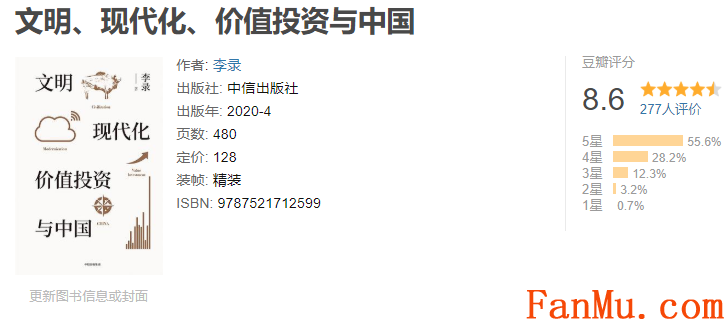
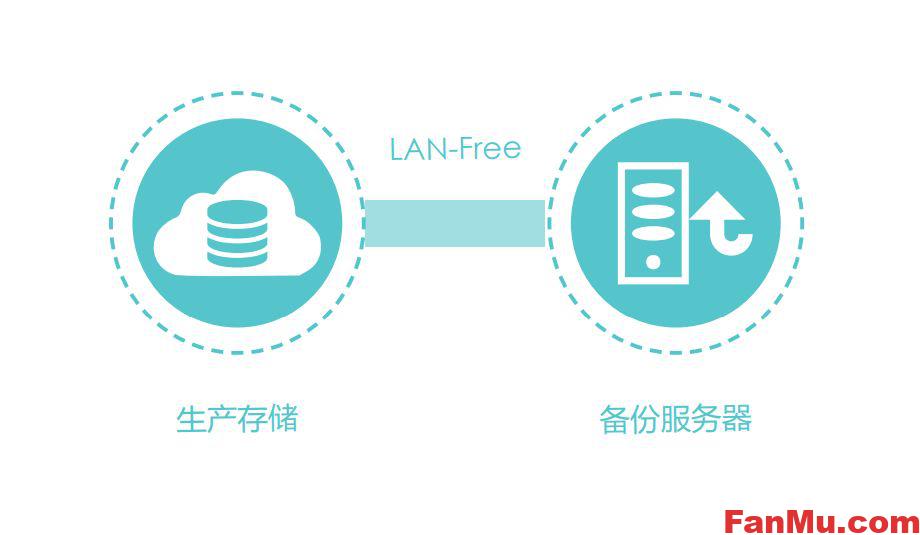
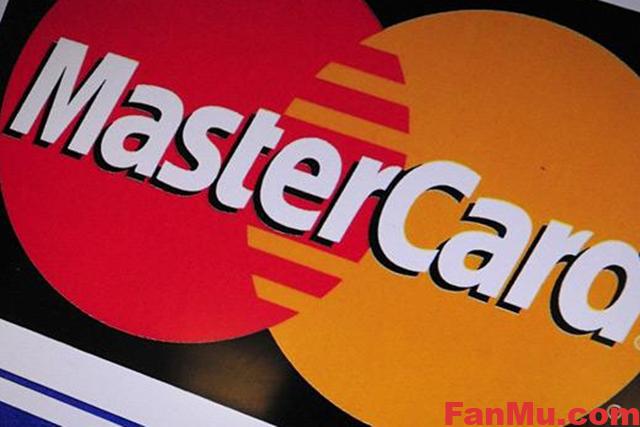
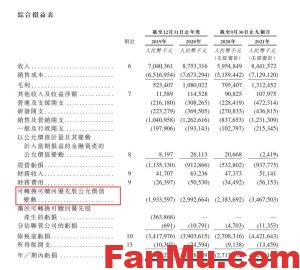


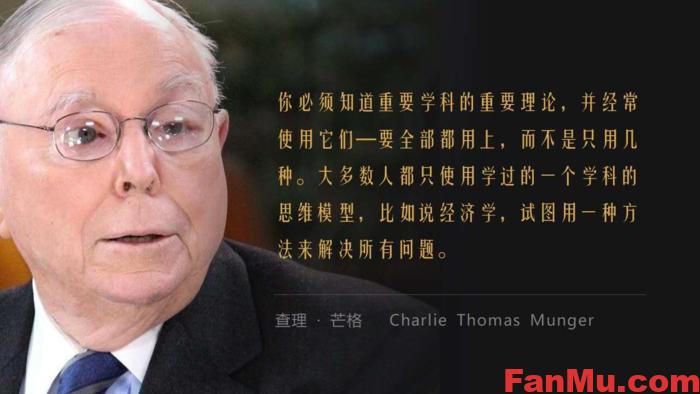
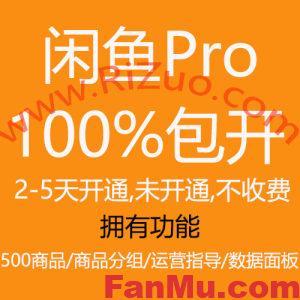
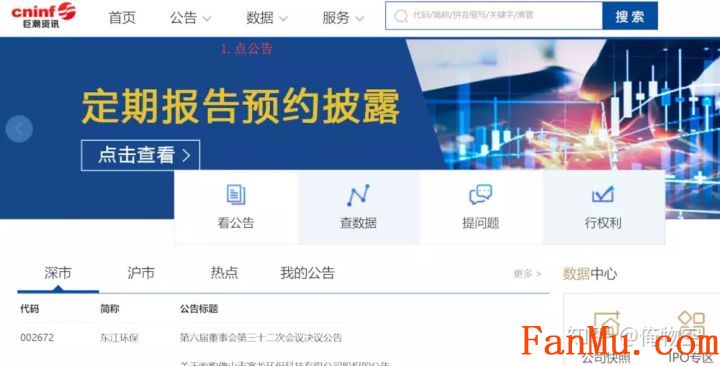

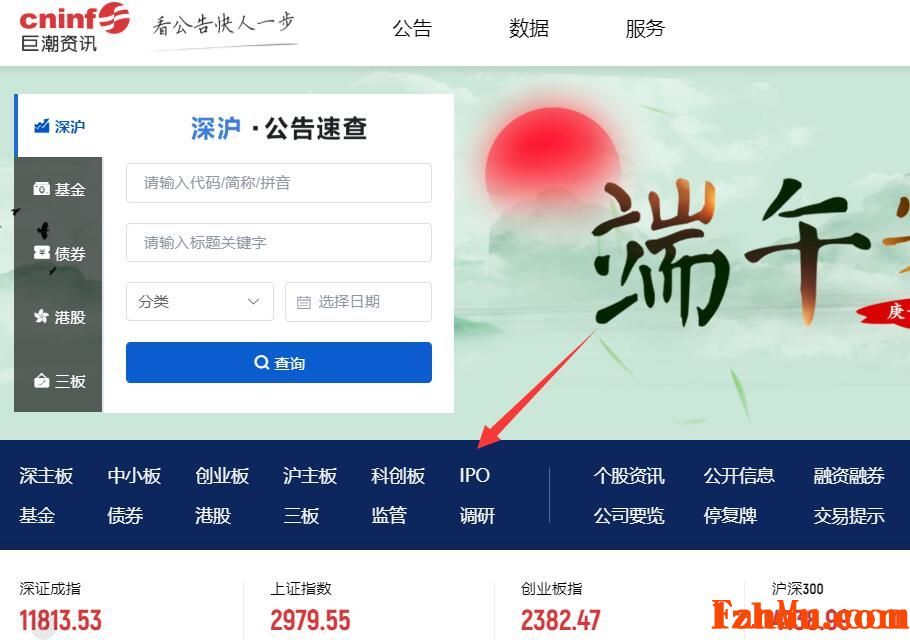

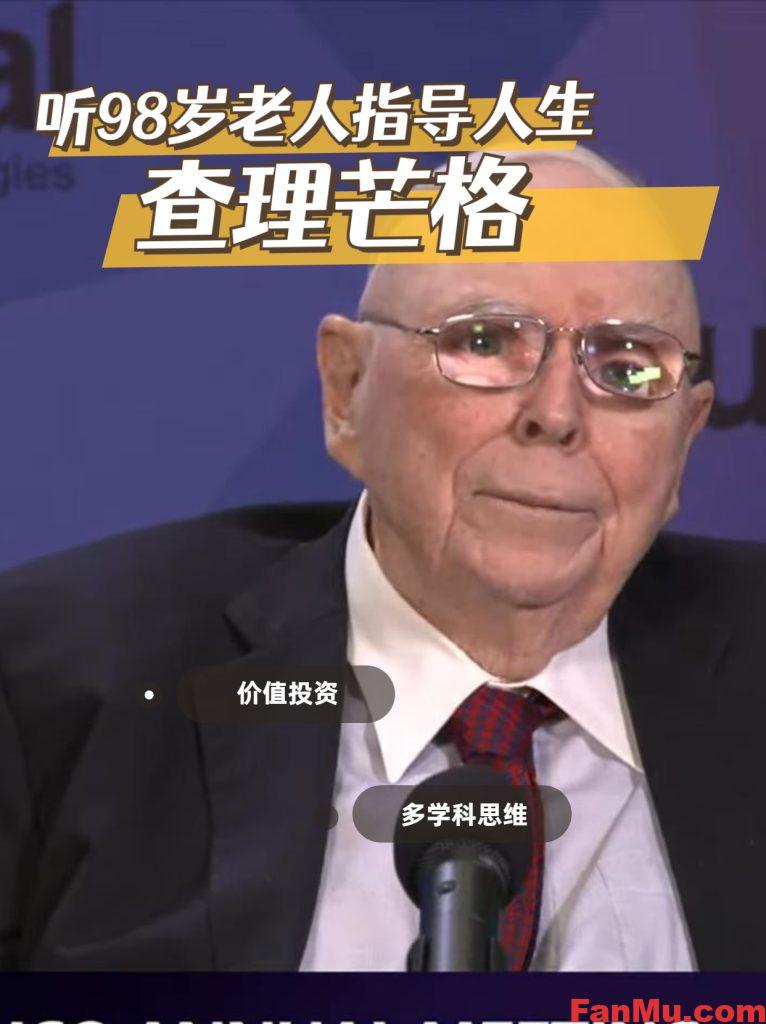
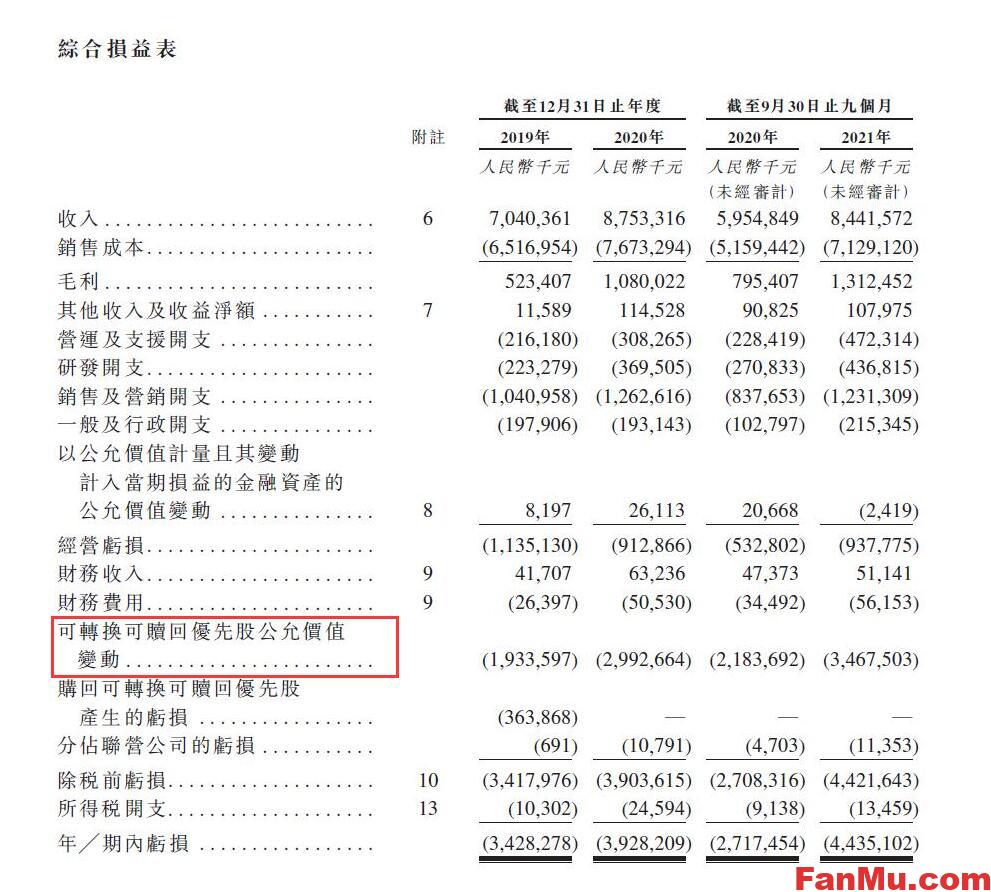


暂无评论内容